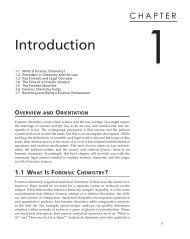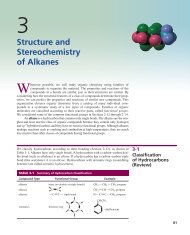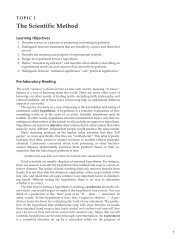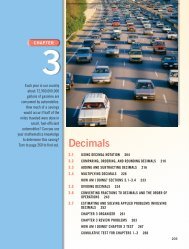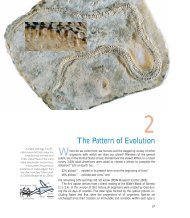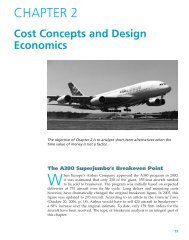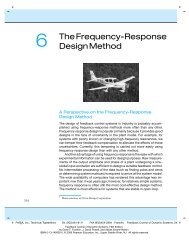CHAPTER 3 - Educators
CHAPTER 3 - Educators
CHAPTER 3 - Educators
Create successful ePaper yourself
Turn your PDF publications into a flip-book with our unique Google optimized e-Paper software.
88 <strong>CHAPTER</strong> 3/COST-ESTIMATION TECHNIQUES<br />
TABLE 3-1 Examples of Cost Drivers Used in Parametric Cost Estimates<br />
Product Cost Driver (Independent Variable)<br />
Construction Floor space, roof surface area, wall surface area<br />
Trucks Empty weight, gross weight, horsepower<br />
Passenger car Curb weight, wheel base, passenger space, horsepower<br />
Turbine engine Maximum thrust, cruise thrust, specific fuel consumption<br />
Reciprocating engine Piston displacement, compression ratio, horsepower<br />
Aircraft Empty weight, speed, wing area<br />
Electrical power plants KiloWatts<br />
Motors Horsepower<br />
Software Number of lines of code<br />
service, or activity) to one or more independent variables (i.e., cost drivers). Recall<br />
from Chapter 2 that cost drivers are design variables that account for a large<br />
portion of total cost behavior. Table 3-1 lists a variety of items and associated cost<br />
drivers. The unit technique described in the previous section is a simple example<br />
of parametric cost estimating.<br />
Parametric models are used in the early design stages to get an idea of<br />
how much the product (or project) will cost, on the basis of a few physical<br />
attributes (such as weight, volume, and power). The output of the parametric<br />
models (an estimated cost) is used to gauge the impact of design decisions on the<br />
total cost.<br />
Various statistical and other mathematical techniques are used to develop<br />
the CERs. For example, simple linear regression and multiple linear regression<br />
models, which are standard statistical methods for estimating the value of<br />
a dependent variable (the unknown quantity) as a function of one or more<br />
independent variables, are often used to develop estimating relationships. This<br />
section describes two commonly used estimating relationships, the power-sizing<br />
technique and the learning curve, followed by an overview of the procedure used<br />
to develop CERs.<br />
3.4.1 Power-Sizing Technique<br />
The power-sizing technique, which is sometimes referred to as an exponential model,<br />
is frequently used for developing capital investment estimates for industrial plants<br />
and equipment. This CER recognizes that cost varies as some power of the change<br />
in capacity or size. That is,<br />
CA<br />
CB<br />
=<br />
SA<br />
CA = CB<br />
X<br />
,<br />
SB<br />
<br />
SA<br />
SB<br />
X<br />
, (3-4)



